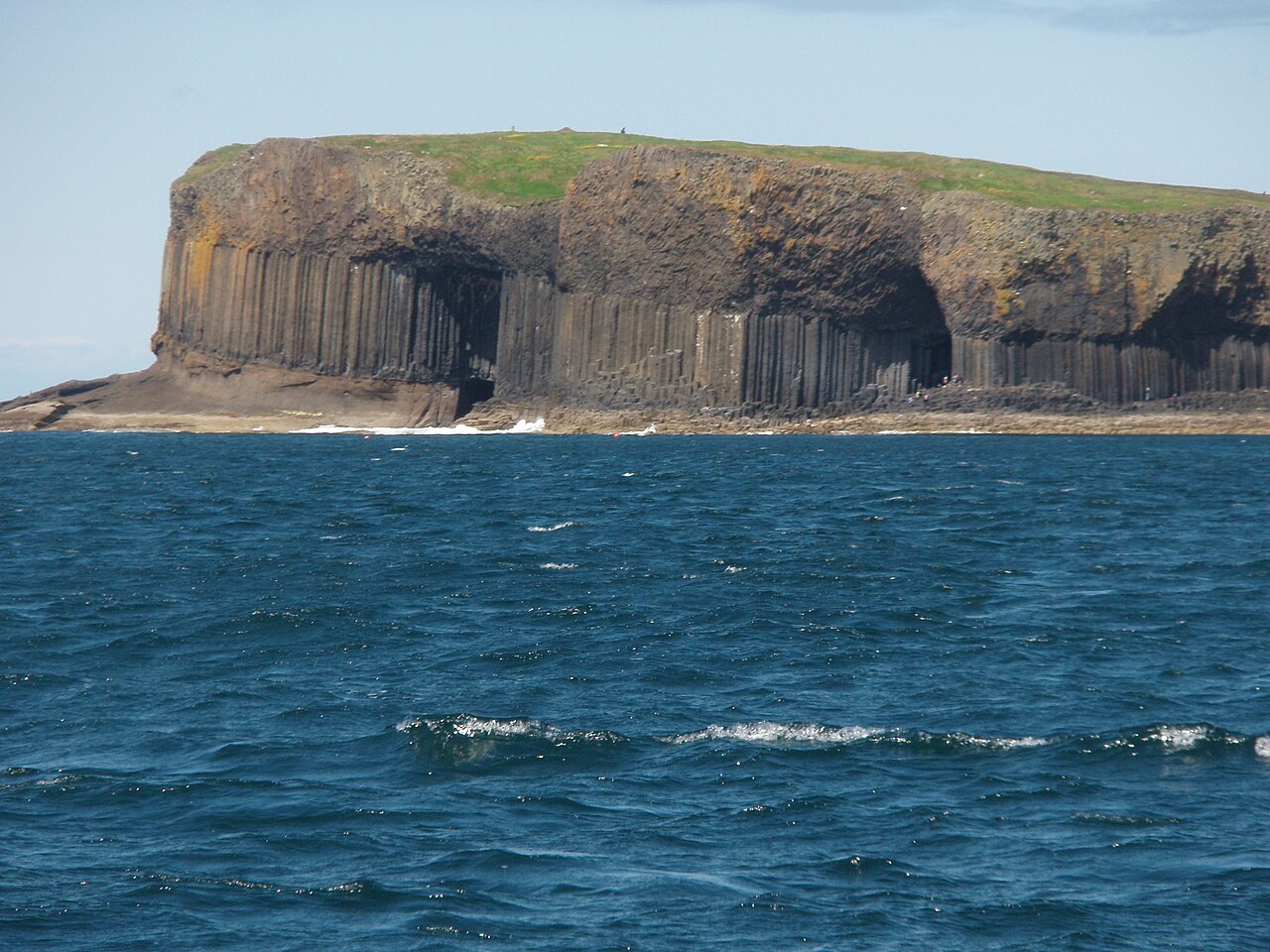Thanks to a mid-winter blitz in the nether workings of my computer, I am at a loss for my images, as they are no longer neatly filed, ready to be placed here to accompany my musings. However, since the time has been so long between posts, I thought I would hybridize my love of geology and the English language and post those resultant mutations here. As I have said many times before, I "married" one and carried on an illicit affair with the other. With neither school of learning complaining, I think I managed to get away with it.
For my first foray into this newfound realm, I begin with Scotland's famed Isle of Staffa (which is on my infamous bucket list). On that uninhabited island, located within the Inner Hebrides, lies a sea cave known as Fingal's Cave.This enormous and stunning sea cave gained its name from James Macpherson, the 18th century Scot poet, who immortalized the 3rd century Finn McCool, who defended the island from Viking invaders.
The entire island is the product of a Paleocene lava flow that cooled into the hexagonally jointed basalt columns that we know today; similar structures can be found all over the world, such as Devil's Postpile in California, Giant's Causeway in Northern Ireland, the island of Ulva, and Yellowstone National Park in Wyoming, to name a few.
Many artists have made a point to immortalize Staffa, but probably the best known of the lot is Felix Mendelssohn. Listen to his "Fingal's Cave" from the Hebrides Overture, Opus 26, and hear within the music, the violent forces that created this monument in the sea.
My great English profs would never let me live it down if I didn't include the poet, William Wordsworth's contribution to this Scottish landmark:
Staffa, the Island
Cave of Staffa
I.
WE saw, but surely, in the motley crowd,
Not one of us has felt the far-famed sight;
How could we feel it? each the other’s blight,
Hurried and hurrying, volatile and loud.
O, for those motions only that invite
The ghost of Fingal to his tuneful cave
By the breeze entered, and wave after wave
Softly embosoming the timid light!
And by one votary, who at will might stand
Gazing, and take into his mind and heart,
With undistracted reverence, the effect
Of those proportions where the Almighty hand
That made the worlds, the sovereign Architect,
Has deigned to work as if with human art!
II.
THANKS for the lessons of this spot,—fit school
For the presumptuous thoughts that would assign
Mechanic laws to agency divine;
And, measuring heaven by earth, would overrule
Infinite Power. The pillared vestibule,
Expanding yet precise, the roof embowed,
Might seem designed to humble man, when proud
Of his best workmanship by plan and tool.
Down-bearing with his whole Atlantic weight
Of tide and tempest on that structure’s base,
And flashing to that structure’s topmost height,
Ocean has proved its strength, and of its grace
In calms is conscious, finding for his freight
Of softest music some responsive place.
III.
YE shadowy Beings, that have rights and claims
In every cell of Fingal’s mystic grot,
Where are ye? Driven or venturing to the spot,
Our fathers glimpses caught of your thin frames,
And, by your mien and bearing, knew your names;
And they could hear his ghostly song who trod
Earth, till the flesh lay on him like a load,
While he struck his desolate harp without hopes or aims.
Vanished ye are, but subject to recall;
Why keep we else the instincts whose dread law
Ruled here of yore, till what men felt they saw,
Not by black arts but magic natural!
If eyes be still sworn vassals of belief,
Yon light shapes forth a bard, that shade a chief. (1)
Staffa the Island,
Fingal's Cave
by John Keats
| NOT Aladdin magian | |
| Ever such a work began; | |
| Not the wizard of the Dee | |
| Ever such a dream could see; | |
| Not Saint John, in Patmos’ isle, |
|
| In the passion of his toil, | |
| When he saw the churches seven, | |
| Golden aisled, built up in heaven, | |
| Gazed at such a rugged wonder! | |
| As I stood its roofing under, |
|
| Lo! I saw one sleeping there, | |
| On the marble cold and bare; | |
| While the surges washed his feet, | |
| And his garments white did beat, | |
| Drenched about the sombre rocks; |
|
| On his neck his well-grown locks, | |
| Lifted dry above the main, | |
| Were upon the curl again. | |
| “What is this? and what art thou?” | |
| Whispered I, and touched his brow; |
|
| “What art thou? and what is this?” | |
| Whispered I, and strove to kiss | |
| The spirit’s hand, to wake his eyes. | |
| Up he started in a trice: | |
| “I am Lycidas,” said he, | |
| “Famed in fun’ral minstrelsy! | |
| This was architectured thus | |
| By the great Oceanus!— | |
| Here his mighty waters play | |
| Hollow organs all the day; | |
| Here, by turns, his dolphins all, | |
| Finny palmers, great and small, | |
| Come to pay devotion due,— | |
| Each a mouth of pearls must strew! | |
| Many a mortal of these days | |
| Dares to pass our sacred ways; | |
| Dares to touch, audaciously, | |
| This cathedral of the sea! | |
| I have been the pontiff-priest, | |
| Where the waters never rest, | |
| Where a fledgy sea-bird choir | |
| Soars forever! Holy fire | |
| I have hid from mortal man; | |
| Proteus is my sacristan! | |
| But the dulled eye of mortal | |
| Hath passed beyond the rocky portal; | |
| So forever will I leave | |
| Such a taint, and soon unweave | |
| All the magic of the place.” | |
| So saying, with a spirit’s glance | |
| He dived! (2) | |
|
The above image was created by J.M.W. Turner for the cover of Sir Walter Scott's book of poetry. The university of Edinburgh has a fine description of how deeply impressed Sir Scott was by his visit to Staffa in 1810; he declared it:
... 'one of the most extraordinary places I ever beheld' which 'exceeded in
my mind every description I had heard of it' (Letter to Joanna Baillie,
July 19, 1810). He was particularly struck by Fingal's Cave: 'the
appearance of the cavern composed entirely of basaltic pillars as high
as the roof of a cathedral and running deep into the rock, eternally
swept by a deep and swelling sea, and paved as it were with ruddy marble
baffles all description'. He subsequently described Fingal's Cave in
The Lord of the Isles (1815), canto IV, stanza X: 'that wondrous dome, |
Where, as to shame the temples deck'd | By skill of earthly architect, |
Nature herself, it seem'd, would raise | A Minster to her Maker's p
raise!' (lines 13-17). (3)
Jules Verne also became duly inspired by Fingal's Cave and included a reference to it in his novel, The Green Ray. The following is an illustration by Léon Benett from Verne's book.
What becomes obvious is the view from inside the cave is contagious, as the opening perfectly frames the sister island of Iona.
Joseph Mallord William Turner, who I mentioned before, also painted a moody and impressionistic view of Staffa in 1831-32.
Next, is "Fingal’s Cave, Island of Staffa, Scotland" by Thomas Moran, who painted this version in 1884-5. Notice how he incorporates Ireland's Giant's Causeway within the picture...
Alfred, Lord Tennyson, also visited Fingal's Cave during his early years as a poet and if there is any doubt that that this island inspired his zest for the natural sublime in his poetry, then I invite you to read, "Sea Dreams." One can sense the raging waves, and see the inhabitants in the dimly lit caves and "grots." There is even the stark grasp of natural law in his "Break, Break, Break" that relies on the images of a turbulent sea railing against the cliffs.
There are a few others whose connection to the Island of Staffa was felt within their particular art form, but these great talents listed here were the first explorers who envisioned the geology of a 65 million year old volcanic eruption as a vehicle to convey the life, the disappointments, the darkness and the light of the human spirit.
~~Lin
1. & 2. Henry Wadsworth Longfellow, ed. Poems of Places: An Anthology in 31 Volumes.
Scotland: Vols. VI–VIII. 1876–79.
3. "Staffa." Engraving of a cave at Staffa by E. Goodall after J.W.M. Turner.The University of Edinburgh Image Collection. http://images.is.ed.ac.uk/luna/servlet/detail/UoEwal~1~1~69552~101055:Staffa . March 19, 2014
4. All non-referenced images are courtesy of Wikimedia and are in the public domain.


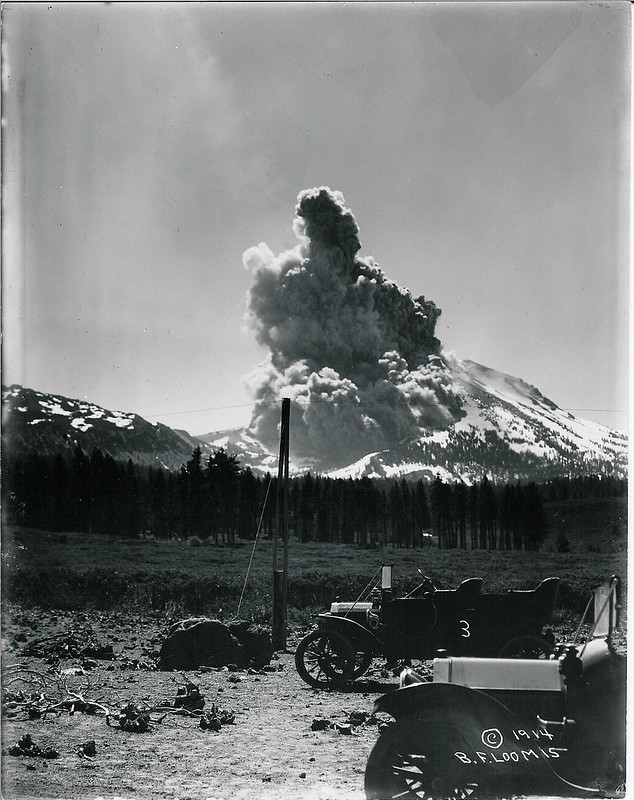
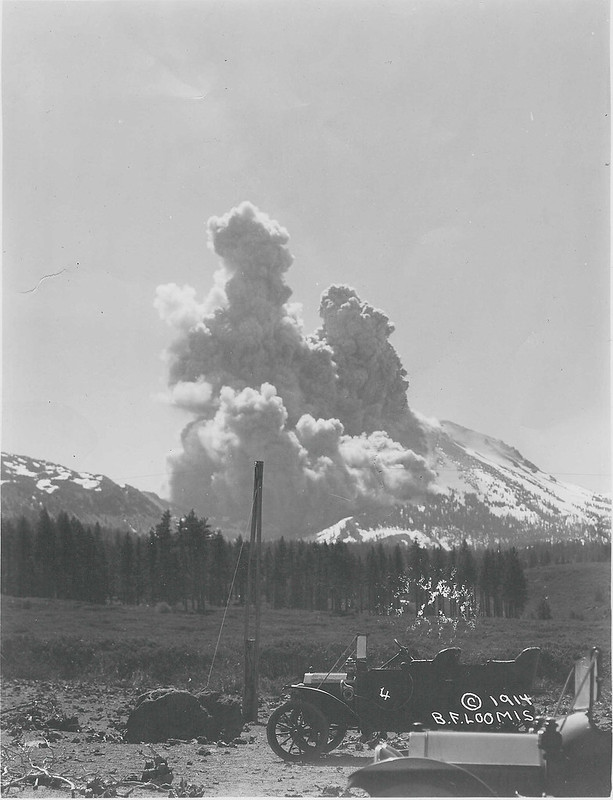
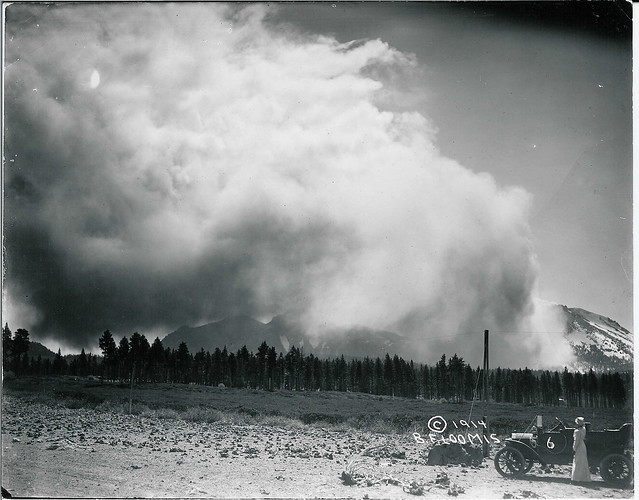
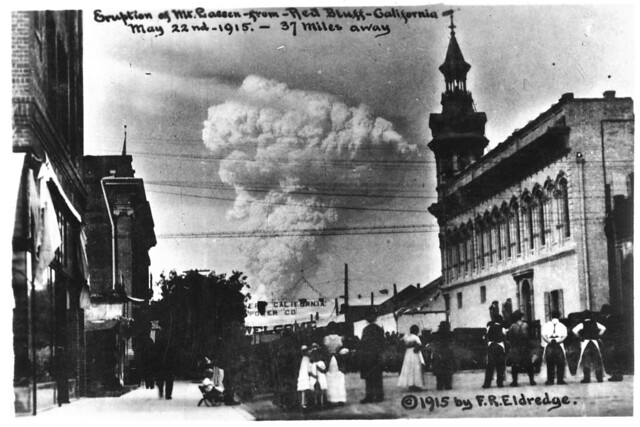
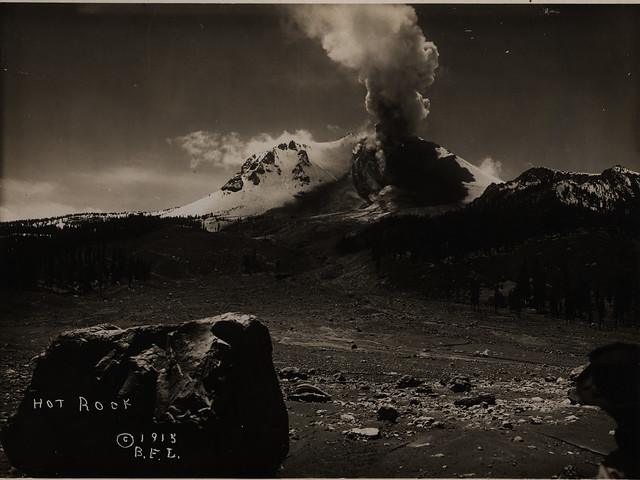
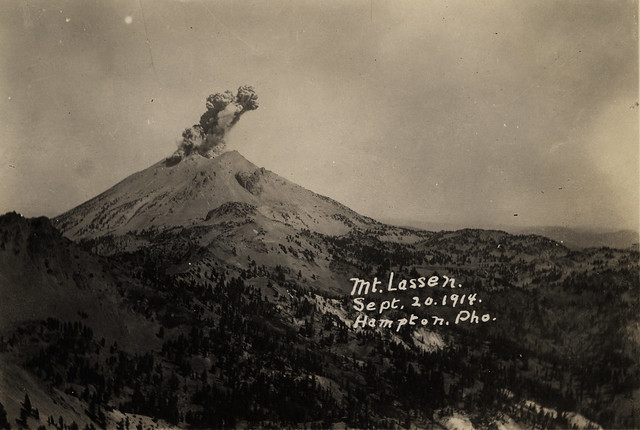
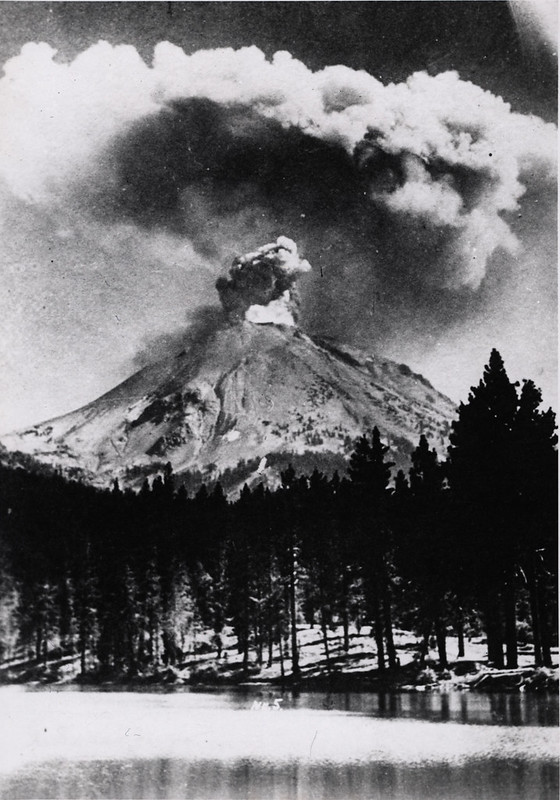


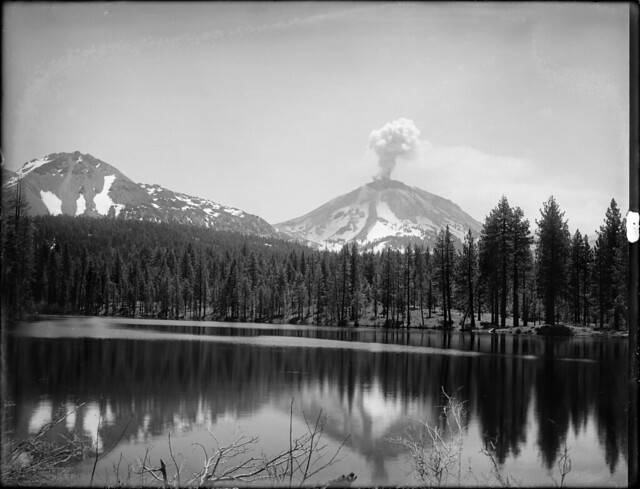

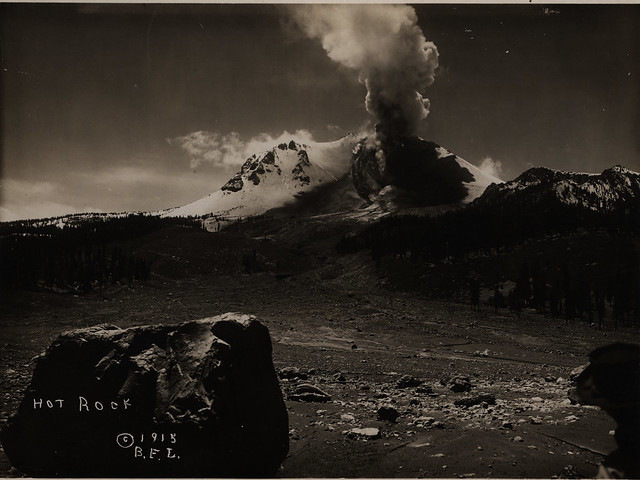
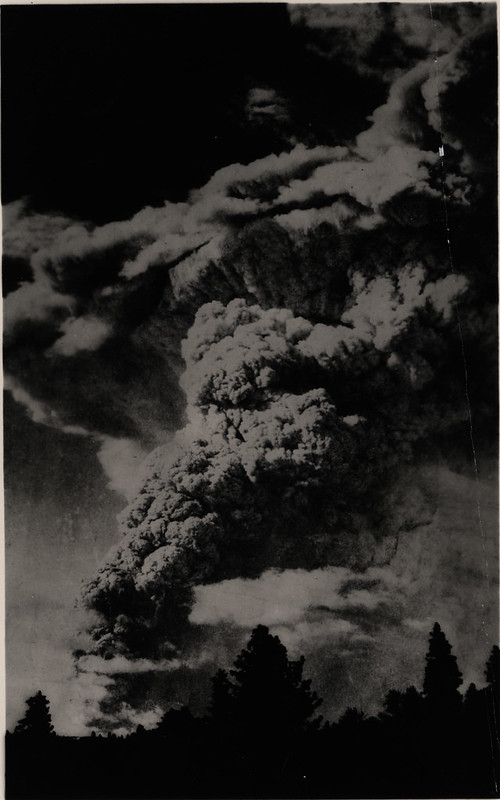
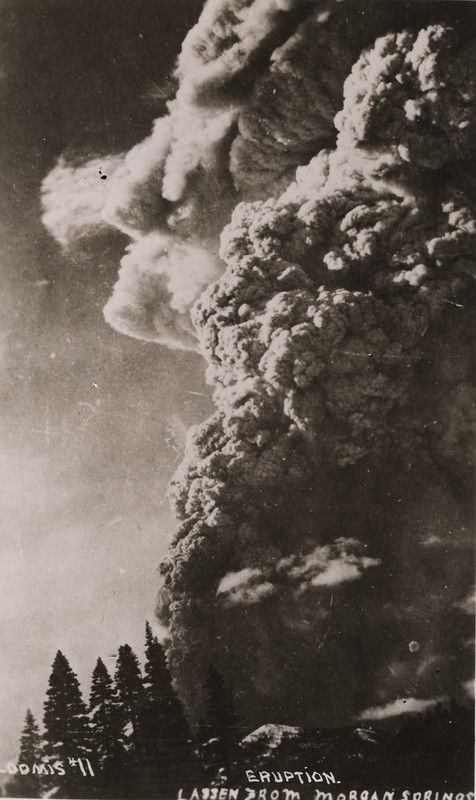
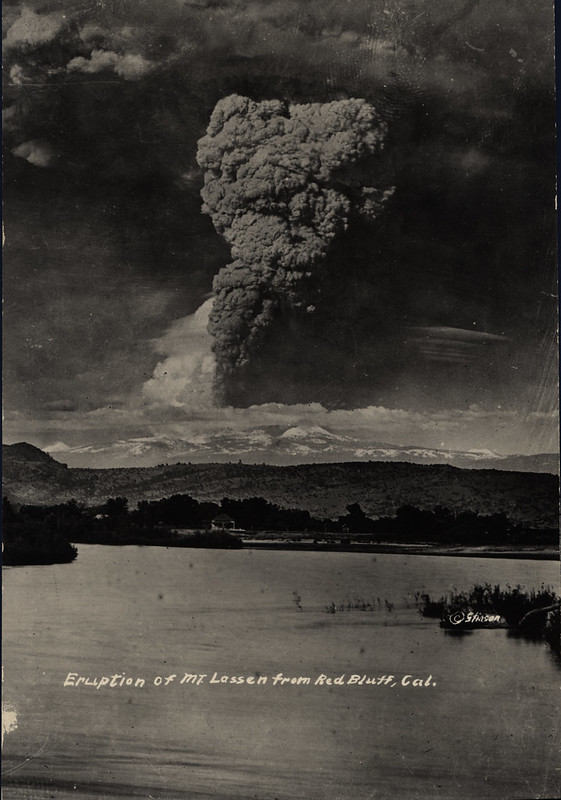
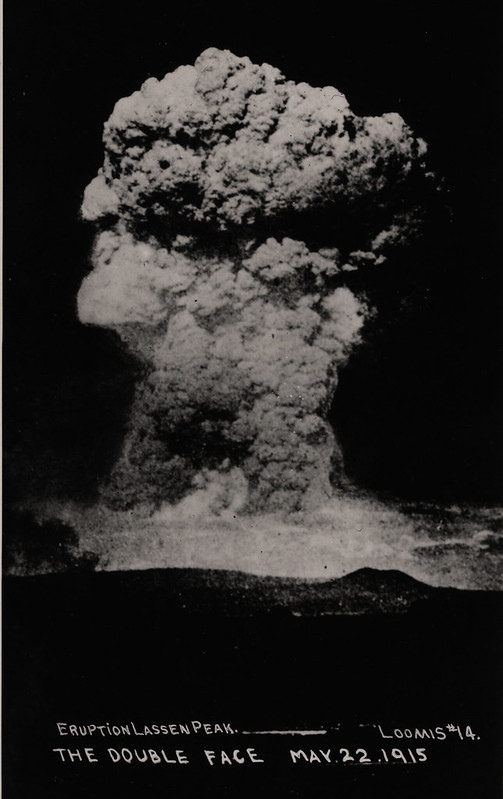
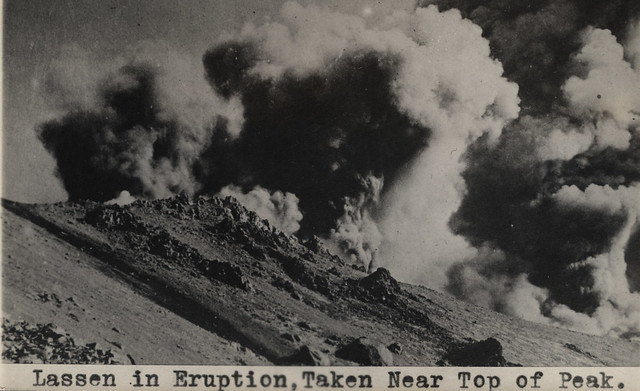


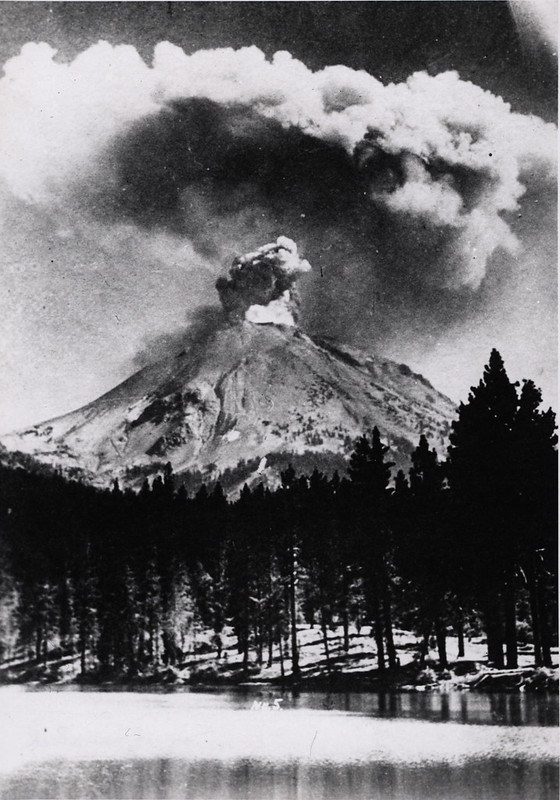
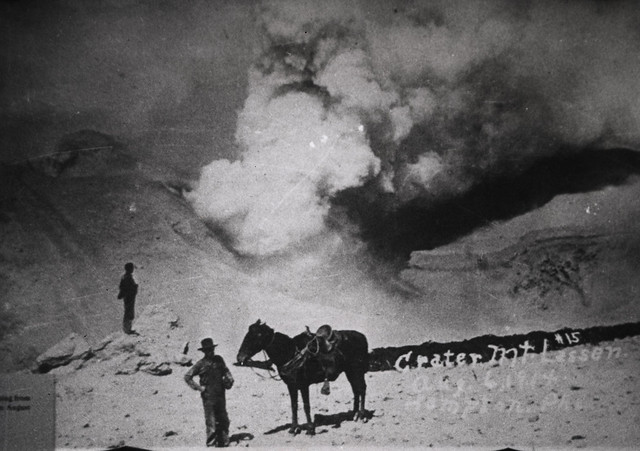
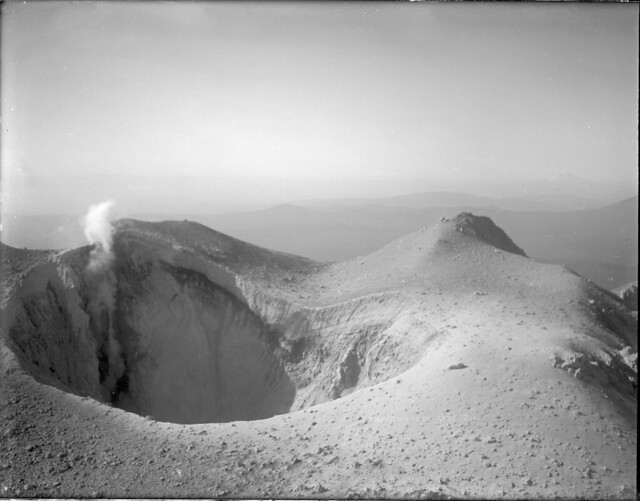
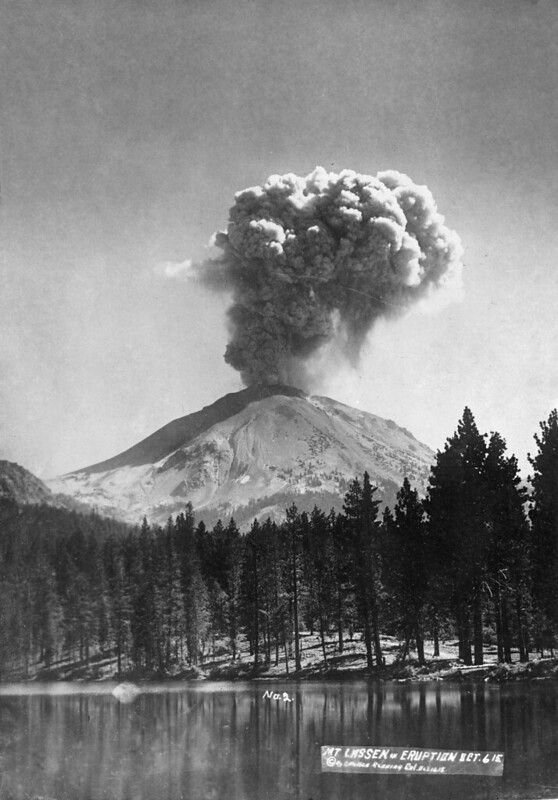
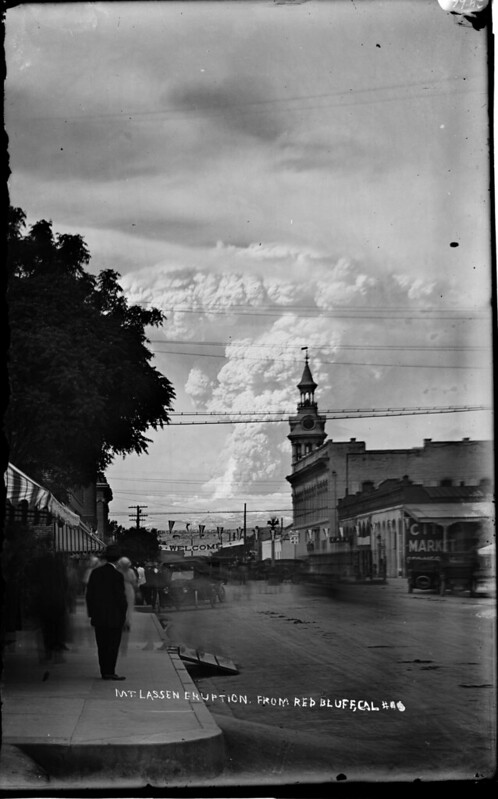
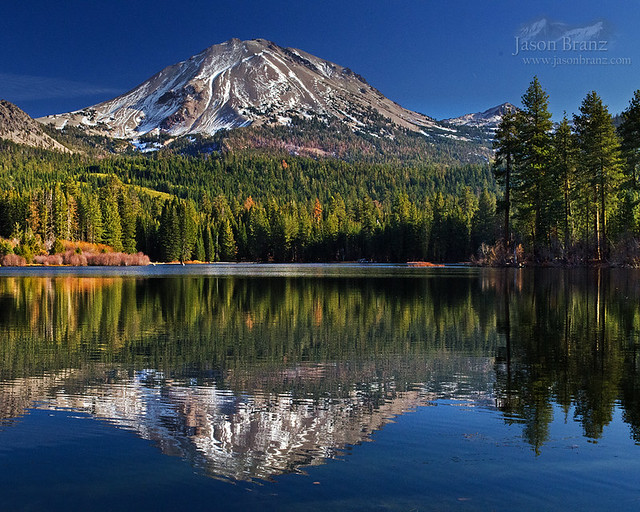 Lassen Peak today, from Manzanita Lake
Lassen Peak today, from Manzanita Lake
